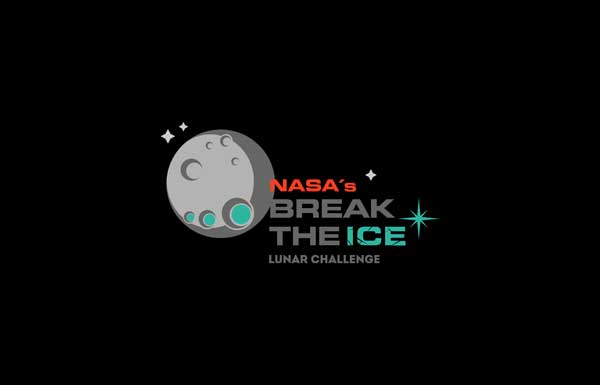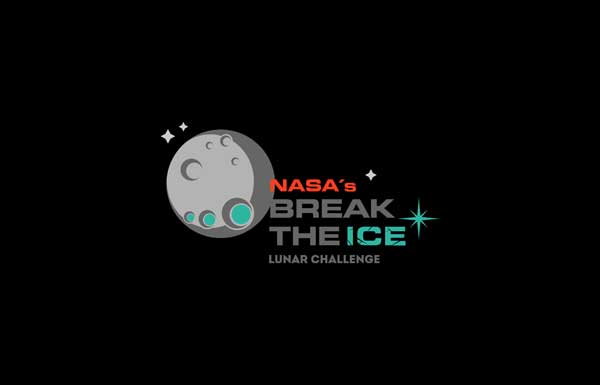
NASA Awards $500,000 in Break the Ice Lunar Challenge (Image Credit: SNN)
HUNTSVILLE, Ala. (NASA PR) — As NASA prepares to go to the Moon with the Artemis program, in-situ resource utilization is paramount, and there is no hotter commodity than water. To that effect, 13 teams from across the United States have won a share of a $500,000 prize in a competition that asked for ideas for digging and hauling icy Moon “dirt” – or regolith.
NASA’s Break the Ice Lunar Challenge opened in November 2020, incentivizing new approaches for excavating resources astronauts will need during long-duration missions on the Moon. Water, one of the most important resources, is trapped in icy regolith at the Moon’s poles, inside permanently dark and cold craters.
“Expanding the pool of ideas for excavating lunar resources safely and responsibly requires new technology development,” said Monsi Roman, Centennial Challenges program manager at NASA’s Marshall Space Flight Center in Huntsville, Alabama. “The system concepts developed as part of this challenge will enable sustainable lunar surface operations, paving the way for us to convert lunar ice to vital resources and decreasing our supply needs from Earth.”
Redwire Space, headquartered in Jacksonville, Florida, won first place and $125,000 for its proposed two-rover system designed for simplicity and robustness. The company’s Lunar Regolith Excavator (L-Rex) would excavate large amounts of icy regolith. A versatile, low-mass transportation rover called Lunar Transporter (L-Tran) would be responsible for deploying the excavator and delivering regolith and ice.
Colorado School of Mines in Golden won second place and $75,000 for its proposed Lunar Ice Digging System, or LIDS. LIDS would include three rovers – excavator, regolith hauler, and water hauler, as well as a communications and navigation system. Both haulers would have robotic arms for assembly, maintenance, and repairs. And all three vehicles would be teleoperated from a nearby lunar surface habitat.
Austere Engineering of Littleton, Colorado, won third place and $50,000 for its Grading and Rotating for Water Located in Excavated Regolith (GROWLER) system. The system has an estimated mass of around 12 metric tons – slightly heavier than a school bus. The GROWLER would first establish a local positioning system and map the surface and underground rocks obstructing excavation. The GROWLER would then excavate icy regolith with a rotary tiller before extracting and delivering water.
NASA selected 10 additional teams that submitted viable and innovative ideas that could benefit to NASA and the nation soon. Each will receive $25,000. The runners-up are:
- AggISRU from Texas A&M University in College Station.
- Aurora Robotics from the University of Alaska in Fairbanks.
- Lunar Lions from the Columbia University Robotics Club in New York.
- OffWorld Robotics in Pasadena, California.
- Oshkosh Corporation in Oshkosh, Wisconsin.
- Rocket M in Mojave, California.
- Space Trajectory from South Dakota State University in Brookings.
- Team AA-Star in Redmond, Washington.
- Team LIQUID from Altadena, California.
- Terra Engineering in Gardena, California.
More About the Challenge
Phase 1 challenged teams to design a system architecture for collecting and moving large amounts of icy regolith and water from a permanently shadowed region near the Moon’s South Pole. Teams had seven months to register and submit a detailed system architecture, an excavation plan, and an animation of the system in operation. Thirty-one teams – including academia, industry, and independent inventors from 17 U.S. states, Canada, Australia, and Sri Lanka – submitted eligible proposals.
NASA convened a panel of experts to evaluate and score each team based on their solution’s potential performance in extreme conditions to determine the winners. Specific performance goals included maximum water delivery, minimum energy use, and lowest-mass equipment.
A future Phase 2 of the challenge may focus on hardware development and demonstration.
The Break the Ice Lunar Challenge is a NASA Centennial Challenge, managed by NASA Marshall and NASA’s Kennedy Space Center in Florida. Centennial Challenges are part of the Prizes, Challenges, and Crowdsourcing program within NASA’s Space Technology Mission Directorate. NASA has contracted Ensemble Consultancy to support the management of competitors for this challenge.
For more information about NASA prizes, challenges, and crowdsourcing, go to:
https://www.nasa.gov/solve/index.html
– Advertisement –









